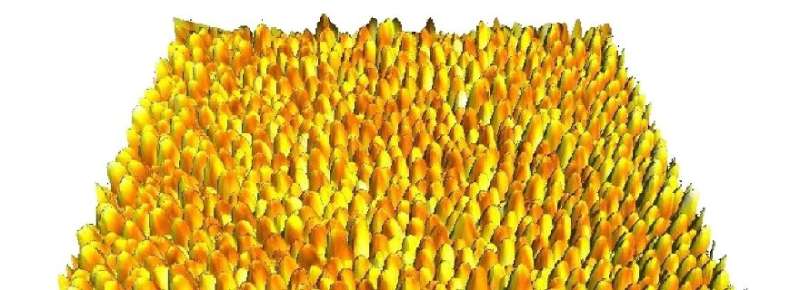Observing a changing platinum electrode

The surface of platinum electrodes changes much more during use than was previously thought. In a collaboration between the Leiden Institutes of Chemistry and Physics, chemists Leon Jacobse, Yi-Fan Huang and Marc Koper, and physicist Marcel Rost have been able to show this for the first time. Publication in Nature Materials.
Platinum electrodes are the core of electrolysers, which convert electricity into hydrogen, and of fuel cells, which convert hydrogen into electricity; these are devices that will play a key role in the provision of sustainable energy, in such applications as hydrogen cars. There is one problem, however, namely that the performance of platinum electrodes declines with use, which means that the electrodes have to be replaced periodically. This is a costly business, so manufacturers are trying to develop better electrodes. However, they lack the fundamental knowledge to be able to devise effective alternatives.
The researchers have now unveiled part of the process of the roughening of platinum electrodes at varying voltages, although more research is needed to fully understand this process. This insight will help manufacturers develop electrodes that have a longer working life.
The experiments were based on a platinum model electrode: a single crystalline platinum surface the size of one euro cent that has a very regular atomic structure. By first increasing the electrical potential of the electrode and then decreasing it, the platinum oxidises and reduces successively, whereby oxides form on the surface, and subsequently reduce. This is to some extent comparable with what happens when a fuel cell or electrolyser is switched on and off.
A novel aspect of this research is that during each experiment not only the current was measured, but also the change of the platinum surface at the atomic level was observed simultaneously, using a home-built scanning tunneling microscope. Measuring and observing are generally two separate activities that take place at different stages, but combining them gives the researchers a unique opportunity to understand the process step by step.
The researchers observed in the experiments that, after eight cycles of increasing and decreasing the voltage, numerous tiny 2-D islands of platinum formed on top of the original more or less flat platinum. After around thirty cycles the islands have expanded so much that they cover almost the whole original surface. After that they increase further with each cycle, particularly in height, up to 170 cycles.
To date, both researchers and electrode manufacturers prepared a clean platinum electrode by applying around 20 cycles. Although there are those who still think that the electrodes remain smooth, there have always been indications that some kind of roughening has to take place. The Leiden research provides a lot of insight into how rough the surface actually is and how it develops, and also demonstrates that this process of roughening continues.
Another surprising finding is that the reactivity of the electrode at first increases more rapidly than the growth of the islands, and that after this the roughness increases further, but the reactivity remains constant, until, as expected, after around 20 cycles they even out. The Leiden researchers hope that follow-up research will help them explaining this. They also want to study what happens with the structure of the platinum electrode while a continuous electro-chemical reaction takes place simultaneously, comparable with the situation in a fuel cell or electrolyser in practice.
More information: Leon Jacobse et al. Correlation of surface site formation to nanoisland growth in the electrochemical roughening of Pt(111), Nature Materials (2018). DOI: 10.1038/s41563-017-0015-z
Journal information: Nature Materials
Provided by Leiden University



















